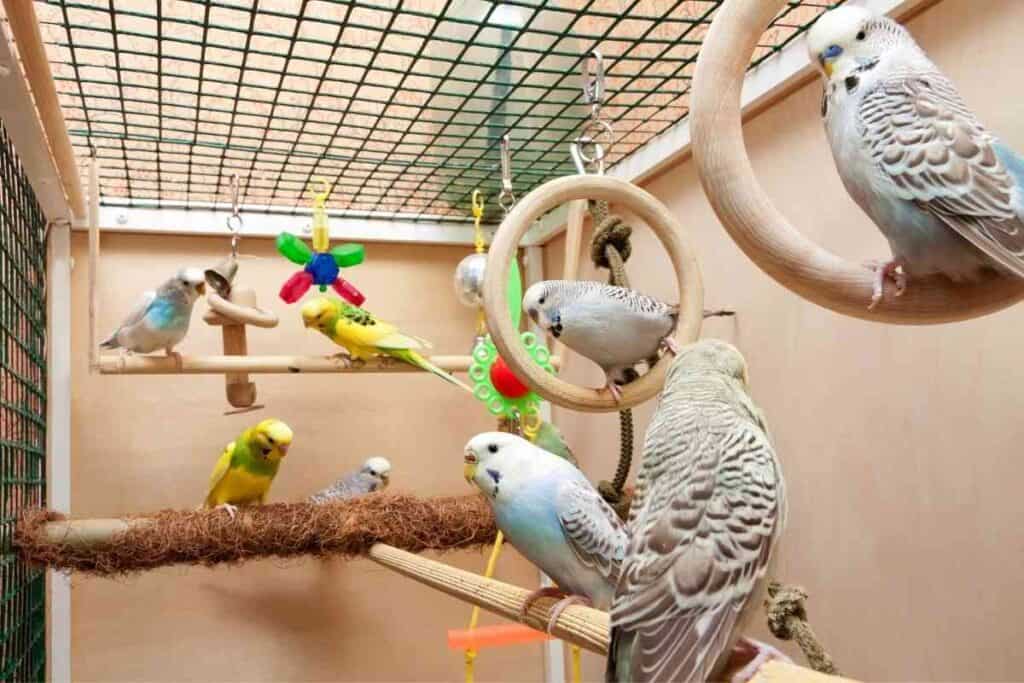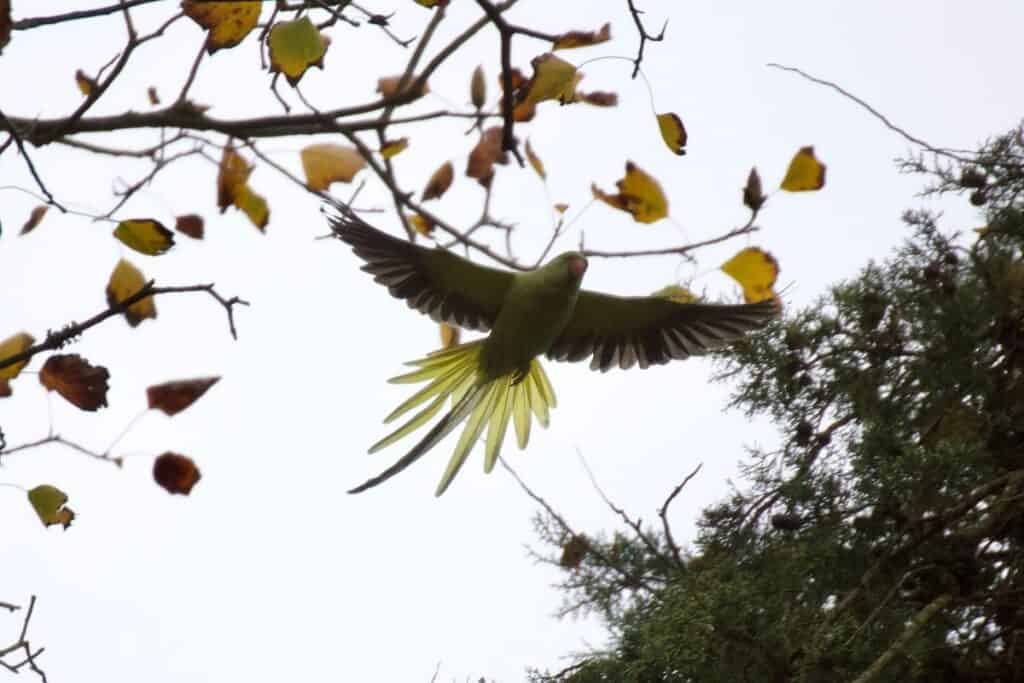Why Clip Parakeet Wings?
There are a lot of things that you need to keep track of when it comes to taking care of your parakeet. You have to make sure that you give them the right food, tarin them well, and help them to feel loved as well.
One of the things that you need to consider when it comes to your parakeet is whether you would like to clip their wings or if you will leave the wings alone.
Why Clip Parakeet Wings?
You can clip the wings of your parakeet to help make sure they do not fly and to prevent them from getting harmed around your home. This can also be a good way to train them without the bird flying all over the place, but it’s not technically necessary to clip your Parakeet’s wings.
Not all parakeets need to have their wings clipped, but sometimes their owners will choose to clip the wings to keep them safe
and to make sure the bird does not get harmed. Having a professional take care of the wing clipping will ensure that it gets done well and the bird is not harmed in the process.
Let’s take a closer look some of the reasons why you may choose to clip the wings of your parakeet, some of the reasons why you may choose not to clip the wings, and how to clip the wings properly so you do not hurt your parakeet.
What Are The Benefits Of Clipping Parakeet Wings?
The main reason to clip the wings on your parakeet is to make sure that they are not going to fly away. Like the hair on a human, bird feathers are able to shed and then regrow regularly and they need regular maintenance to stay healthy.
Birds will be able to lose all their feathers in an orderly and sequential process, rather than losing them all at once to help them to fly when they need to get away from predators.
The feathers that your parakeet needs to fly, which are known as flight feathers, are going to be the 10 outermost wing feathers, which are known as primaries, and then the 9 to 25 innermost wing feathers, known as secondaries.
All of these feathers have an anchor into the bone. When a new feather grows in, they will contain blood inside the shaft, so they are known as the blood feathers.
Blood will recede to the base of the feather as the feather matures, which means that the shaft will start to look like an empty stray. There will be some nerves in these feathers, near the attachment bone, but the feather shaft does not have any nerves.
When the wing feathers get damaged or cut, then the bird will have some impairment in their ability to fly. Some bird owners will choose to cut into these primary feathers to help inhibit flight.
There are some people who are opposed to this process, but it could be appropriate to help keep the parakeet safe.
The good news is that wing trimming is usually temporary and new feathers will grow in to replace the ones that get cut over time. This means the bird can regain their ability to fly.
However, when the wing clipping is done for the right reason and correctly, it can actually be safe, helpful, and painless.
When Should I Clip My Parakeets Wings?
Many bird owners will choose to clip the wings on their parakeet when they are training them to come out of the cage. If you want to let the bird come out of the cage to train them, it is really hard to do this if your bird is flying around like crazy.
Owners may also choose to do this if they feel the bird is exposed to some hazards such as ceiling fans, doors and windows that are open, and more.
There are many situations that are dangerous for your parakeet if they are able to fly around the home. Clipping the wings can make a difference and will keep the bird safe along the way.
Some owners may even choose to clip the wings to make sure the bird will not fly around the home and leave droppings behind or land on furniture and chew them up.
If possible, it is best to start with wing clipping when the bird is young and they have not gotten used to flying around. This will help because the bird will not automatically try to take off flying during the training and then land on the floor.
You can do this on older birds if you would like, even on ones who are accustomed to flying, but the earlier the better so that they may not even realize they can fly and are less likely to need their wings clipped as much.
When Should I Avoid Clipping the Wings on My Parakeet?
While there are many times that wing clipping will be good for the parakeet, this is not a process that works well for each bird.
For example, if you have a parakeet that is overweight and needs to slim down, you may want to keep the wings intact so they can fly around.
If the home has other predatory pets like dogs and cats, then you may want to keep the wings in place to help the bird fly away.
Sometimes a parakeet likes to fly around and have independence. If it is safe enough for them to do so, it may be fine to keep the wings alone and let the bird have some time.
You do need to have some safeguards in place to make sure they will be safe and will not get harmed in the process.

How Should I Clip My Parakeets Wings?
There are different methods that you can use to clip the wings of your parakeet. Not all of them will be effective when it comes to preventing the bird from flying and not all of them will last the same amount of time to stop the parakeet from flying.
The goal of doing the wing trim is to trim down enough feathers to make sure the parakeet will not be able to get lift and start flying, but you also do not want to trim so much that the bird will just fall to the ground.
You know you have done a proper wing trim if the parakeet is able to safely glide to the floor, without any sailing around.
To hinder the bird from flying, you need to trim the birds’ primary feathers. You can choose to trim a varying number of those outermost ten primary feathers, but you really only need to trim off the outermost of the five primary feathers to make the bird not fly.
Trimming more than that, or going into the secondary feathers, is not necessary and could cause some problems for the bird.
If you go for the inner feathers, then you will end up annoying the bird and making them uncomfortable. They will feel this and not like the feeling at all.
When you just do the five primary feathers that are the furthest out, then it will not bother or annoy the bird at all.
Never cut below the level of the primary covert feathers, which are the shorter and smaller feathers that you can see overlying the primary feathers, close to their attachment to the bone, or on the inside of the extended wings.
You should do the lower third to half of the primary feather, but no more. If you try to trim more than this, then the length will start to get too close to the nerve endings of the feather and can make the bird uncomfortable. And it is not necessary to cut that low to get the bird not to fly.

What If I Make A Mistake Clipping My Parakeet’s Wings?
If the wing trimming goes badly, the feathers can grow back, and it can take months before it regrows. It is also possible that if you cut them excessively short that the feathers will never grow back at all.
You need to be careful about clipping the wings to make sure that you do not cause too much harm to the bird at all.
It is easy to make mistakes when it comes to the clipping of your parakeet’s wings. This is why you may want to consider working with a professional to handle the clipping if this is something that you want to do.
They will be able to get the feathers handled well so you do not make a mistake or harm the parakeet on accident.
Deciding to Clip the Wings of Your Parakeet.
Deciding to clip the wings of your parakeet can be a personal decision. There are a lot of good reasons to do it, but there are also a lot of reasons why it can be avoided.
It is not a necessary thing to keep the bird in your home either. Take some of the ideas that we discussed in this article and decide if clipping the wings is a good idea.
